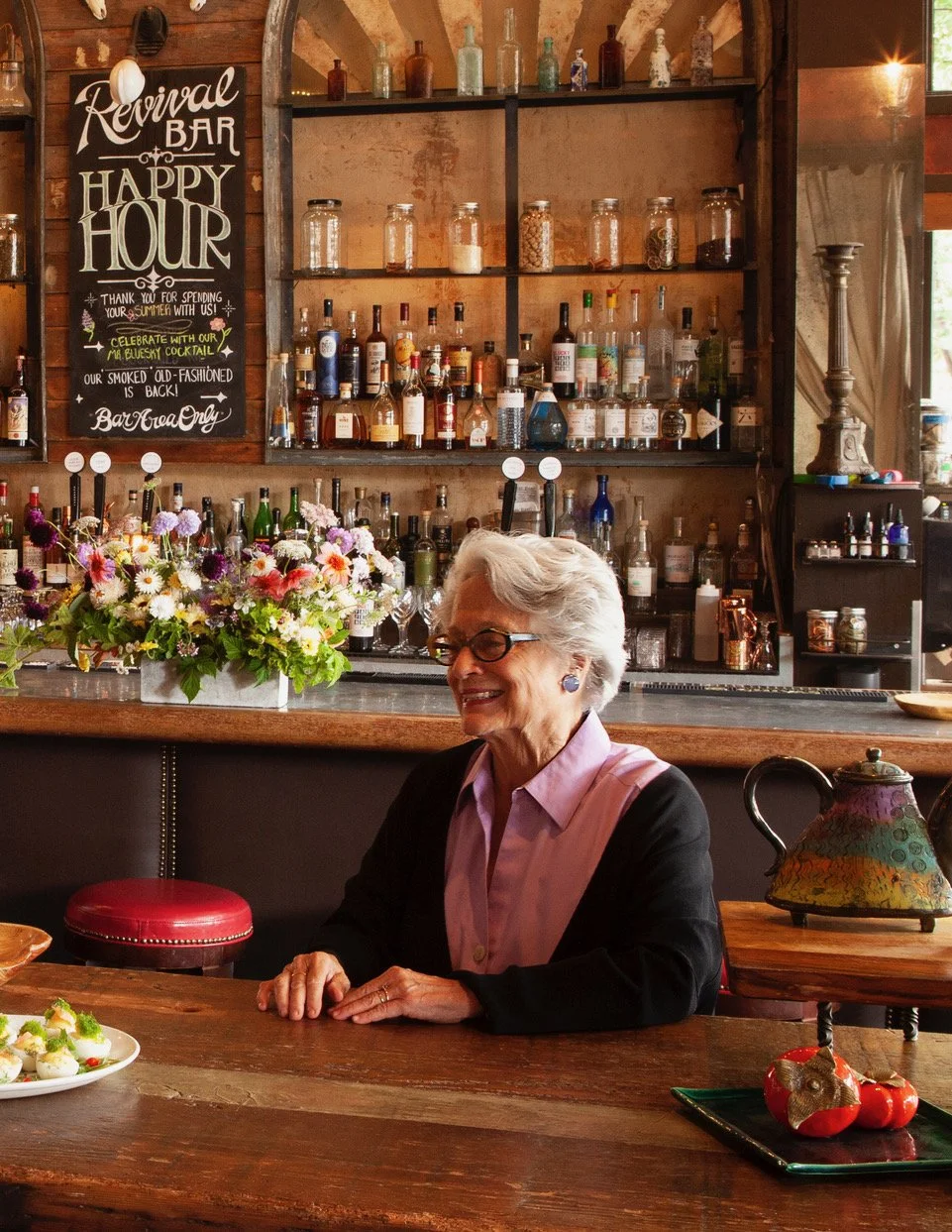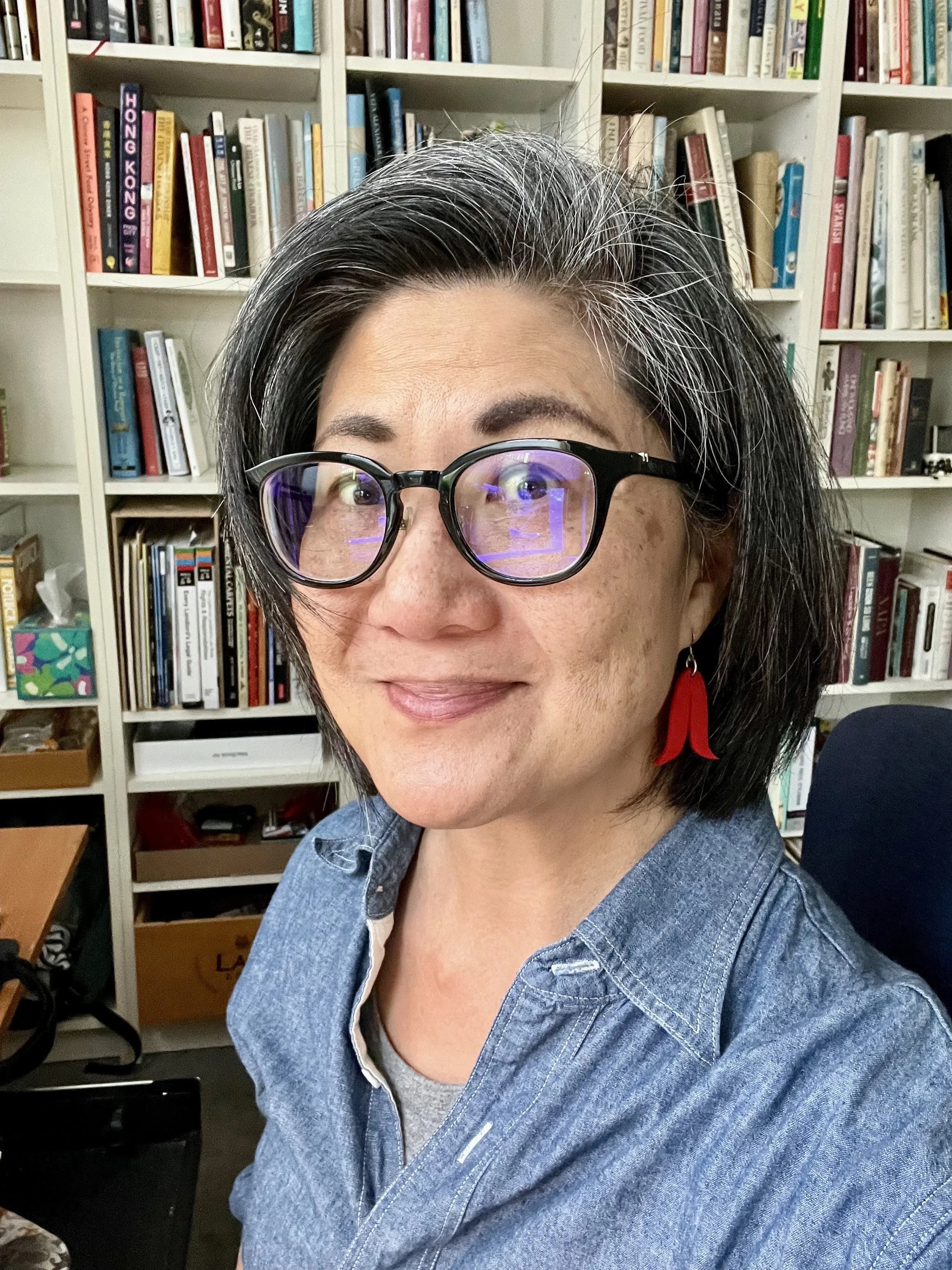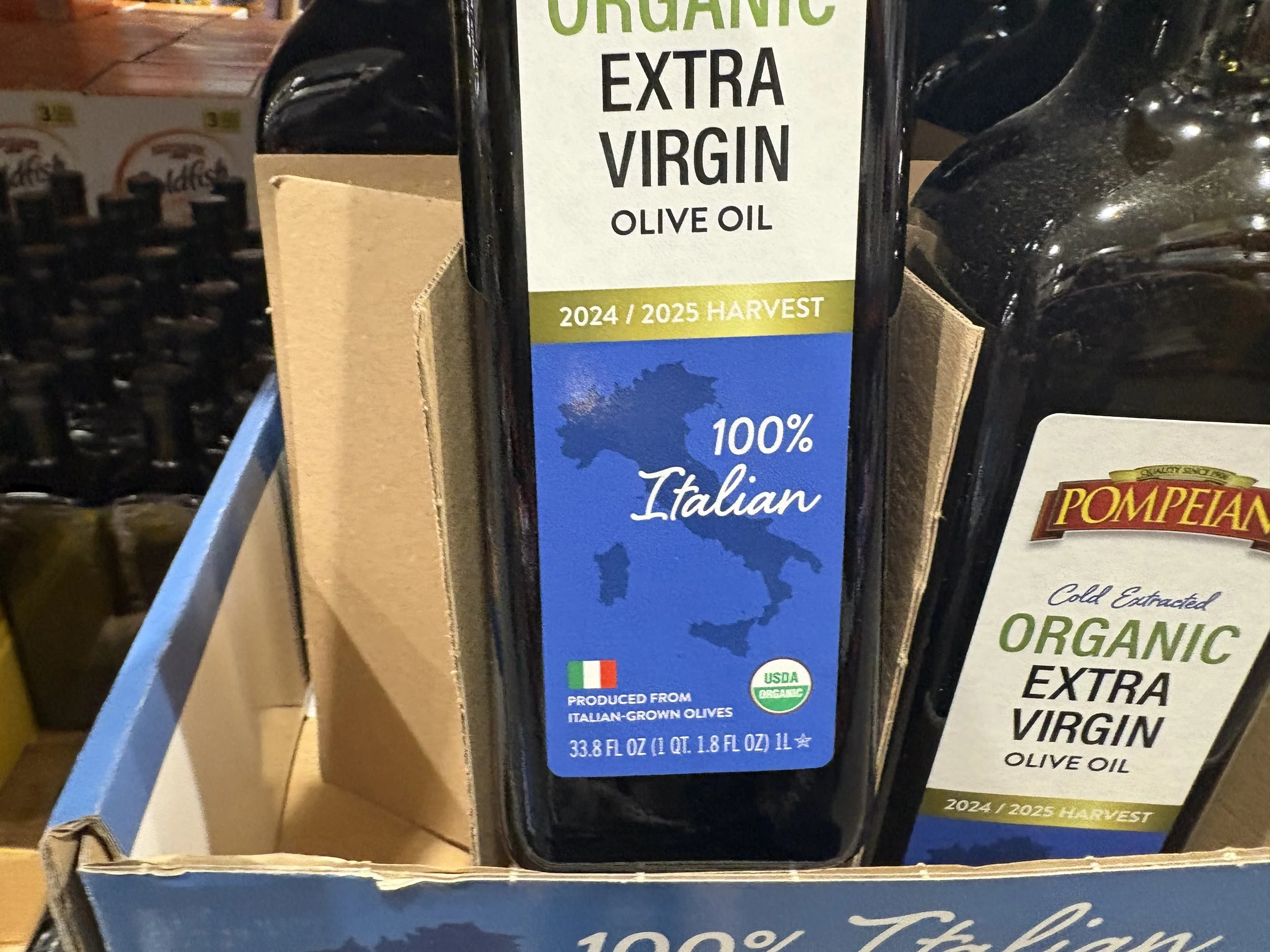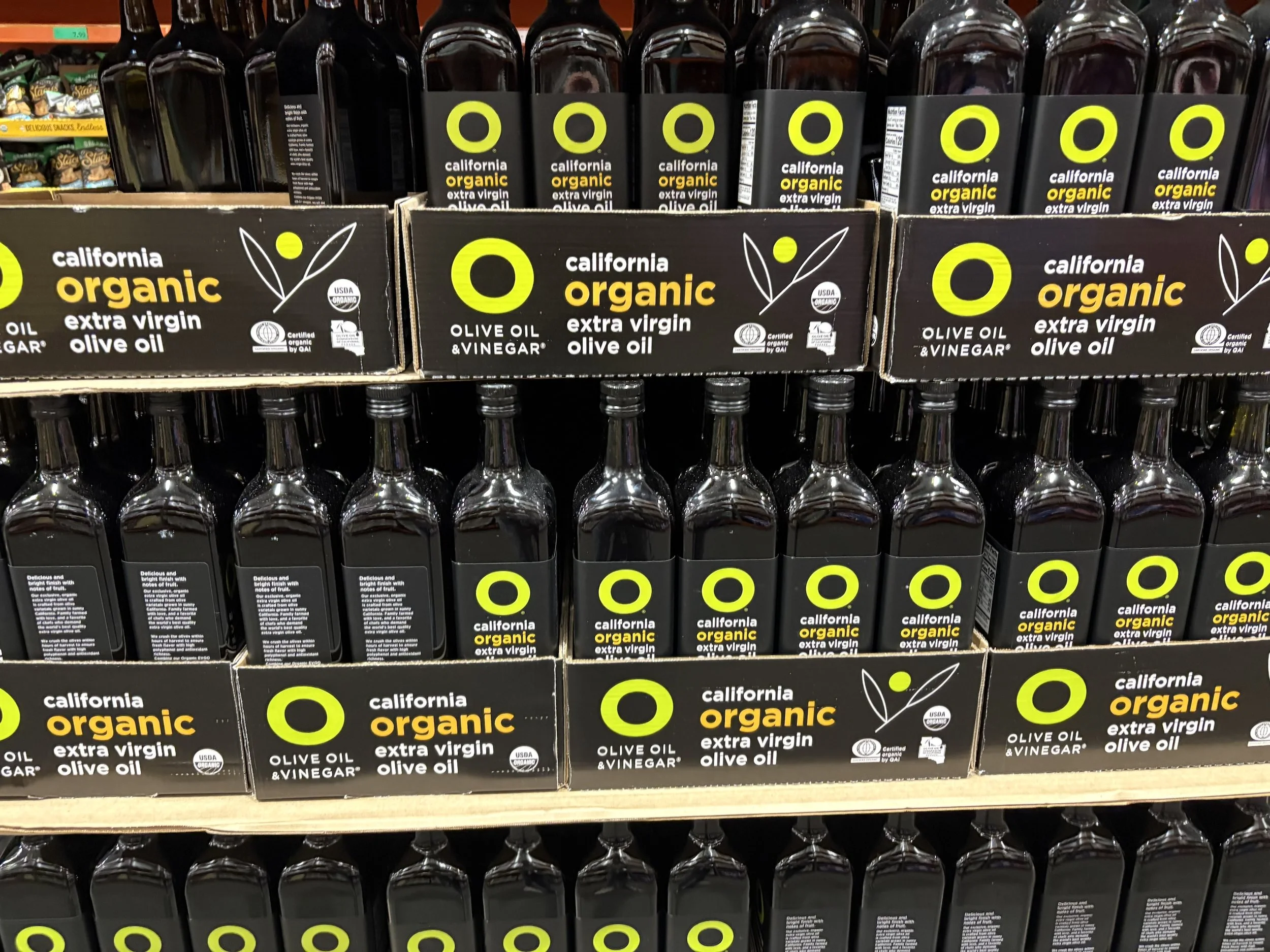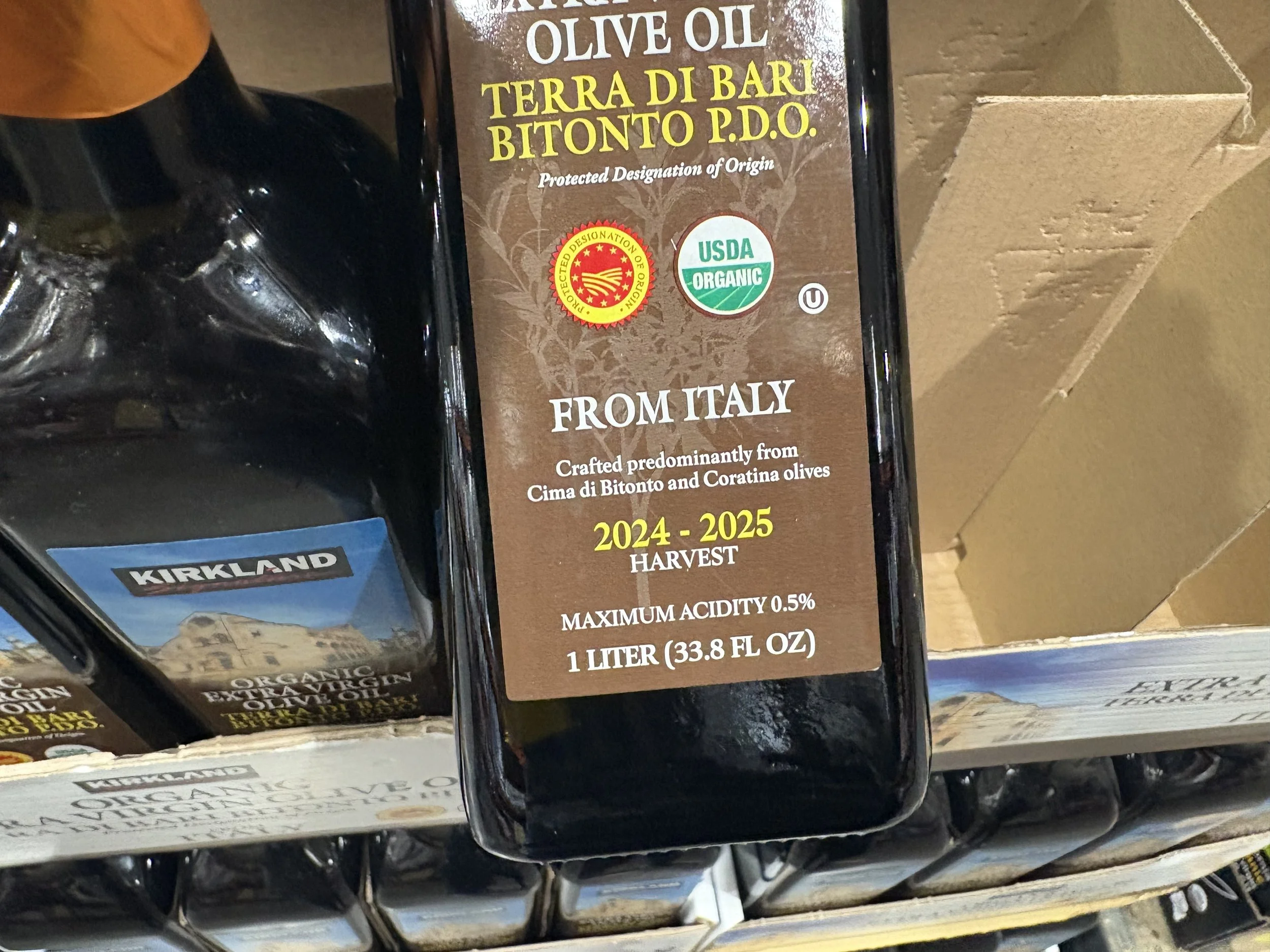Three Olive Oils Worth Buying from Costco
It’s difficult to know what bottle to buy when you are standing in front of a shelf full of olive oils, even if you are someone who tries to educate yourself about olive oil and who knows the words smoke point, rancid and cold pressed. Some of this difficulty has to do with misinformation, some of it has to do with a changing industry and standards, and some of it simply has to do with personal taste. While it's no surprise that the best olive oils are available direct from producers and small specialty stores, we wanted to know, can you also find good olive oil at Costco?
Criteria
What to look for when picking the best possible olive oil
A harvest date
A dark glass bottle or tin
Origin clearly stated
Cultivars named
While there are many bottles of olive oil at Costco, few meet our criteria. A harvest date is the best way to know how fresh the oil is, and fresher is better. Glass or tin will best protect the oil, and plastic has the possibility of leaching into the oil so is best avoided. The origin of the oil and the cultivars show you not only what's in the bottle but where it came from.
We tasted olive oils from California, Italy and Tunisia, and unfortunately the Tunisian oil was defective, so we are not including it on our list. In general, the more information on the label, the better. Interestingly, while not a requirement, all of our top picks were certified USDA organic.
Why Trust Us?
The Expert Panel
Roberta Klugman
Based in Oakland, CA, Roberta Klugman leads Klugman & Associates, a firm specializing in strategic communications, event management, and educational programming for Bay Area food and wine professionals. Her longtime involvement with the California Olive Oil Council (COOC) Board has centered on strategic planning and marketing efforts, culminating in her receipt of the organization's Pioneer award in 2017. A recognized authority on olive oil, Klugman has conducted educational seminars for prominent organizations including Google, Les Dames d'Escoffier, the International Association of Culinary Professionals, and the San Francisco Professional Food Society. She also serves as Committee Co-Chair for the Good Food Awards Oils Category.
Linda Sikorski
Linda Sikorski brings extensive expertise in specialty foods as an educator and buyer. Most recently, she held the position of senior specialty food buyer at Market Hall Foods (previously known as The Pasta Shop) before stepping into retirement. In this role, she oversaw an extensive portfolio of products, with particular emphasis on premium extra virgin olive oils sourced from around the globe. Market Hall was one of the first grocers to commit to buying olive oil from California in the late 1990s, and she had a keen eye on tracking what the consumer was looking for and buying. She has led the Specialty Food Association Retailer Network as chair and contributed insights as a board member for both the California Olive Oil Council and The San Francisco Professional Food Society, and has been at the forefront of the olive oil community since the beginning of the industry in California. Currently, she serves as Committee Co-Chair of the Oils Category for the Good Food Awards.
Deborah Kwan
As founder and CEO of DKPR, Inc., Deborah Kwan brings extensive expertise in public relations and strategic brand development, specializing in the food, beverage, and publishing sectors. Before launching her independent consultancy, Kwan led the San Francisco division of a New York-based boutique firm, where she directed the consumer lifestyle portfolio and spearheaded business expansion initiatives. Her deep connection to the culinary world extends beyond client work—she trained as a pastry cook in both San Francisco and New York City, earning her blue ribbon diploma from Peter Kump's New York Cooking School (today's Institute of Culinary Education). A professionally trained chef with an exceptional palate, Kwan modestly proclaims, “Everything I know about extra virgin olive oil is because of Roberta Klugman.”
The Evaluation Process
A blind tasting and more
Olive oil tasting
This was a blind tasting, but it differed from a professional tasting in that we did not use colored cups and we tasted the oils on their own and with different foods, but more on that later.
The first step was to smell. Experts generally throw in an intentional rancid oil, just to calibrate the nose in comparison. It is good to note that any oil can go rancid in a matter of days if left out in the sun, even a high quality oil.
Characteristics of rancidity are aromas of petroleum, stale nuts, paraffin, metallic, rubber or eraser. Before an oil goes rancid, it starts to oxidize, evident in a waxiness on the palate. Other terminology that experts use in regard to off flavors are winey, waxy and musty or fusty. Fusty characteristics indicate the defects that can happen before the olives get milled and musty indicates the defect after milling.
Aromas and flavors
Desired aromas in a good oil are fruity, fresh, grassy, green, complex, nuanced and herbaceous.
Freshness
As oil ages, the fruit flavors fall off. When tasting, experts will refer to bitterness, which occurs up the front and side of the mouth and pungency in the back of the mouth and throat. Intensity of aroma and taste are also noted. All of these considerations fall into Delicate, Medium or Robust characteristics in an oil.
Klugman advises consumers to get used to the concept of olive oil being a seasonal product, just like produce. Some experts who really pay attention to quality and flavor buy California oil half the year, then switch to an oil that is at its prime from a different country based on seasonality there.
“If there’s rancidity, there’s usually something else going on as well,” says Klugman, who calls these Costco bottles “accountable oils that are not flawed but just not that interesting. In California, we have access to a lot of oils, so I'm not discounting these.”
Sikorski says that “The problem is that all of these oils are almost a year old and they are about to fall off,” in regards to the Costco bottles in the tasting. She questions, “How are they being stored? Then the new oils aren’t going to come in until February, so there will be a gap in quality.” This is standard practice in the grocery industry and is indicative of the lack of understanding of olive oil being a seasonal product.
Go for Quality
“Olive oil is the hardest thing for people to know what to buy,” says Sikorski, who observed this from her time as a buyer at Market Hall. Ultimately, she says that the point of her advocacy is to get more people to use olive oil, and that “all of them are better than using a seed oil." She adds, “If you really want great oil, you have to pay for it, but people are afraid to spend money on olive oil.”
How will you use it?
If you're not professionally evaluating olive oil, consider tasting it as our panel did, with a variety of fresh and cooked vegetables, and bread, potatoes or pasta. You could even taste it on vanilla ice cream! After all, you are not looking to give out awards, but rather to know how the oil tastes with food.
The Results
Each of these oils met our criteria, and even though they were tasted 6+ months after harvest, they still had merit.
Pompeian Cold Extracted Organic Extra Virgin Olive Oil
Pompeian olive oil at Costco
$15.99/liter
Harvest Date: 2024/2025
Country of Origin: Italy
Intensity: Delicate to Medium
Aroma/Taste Descriptors: artichoke, herbaceous, spice, buttery
Bitterness: Medium
Pungency: Medium
Complexity: Yes
Balance: Yes
Certifications:
Non-GMO
USDA Organic
Comments:
Cultivars are listed on the bottle: biancolilla, Nocellara del Belice, voratina
Klugman notes that while it is nice to see the cultivars listed, it is not a good sign to see a blending of the cultivars from different places. Meaning, for example, that one grown in Sicily, and one grown in Puglia, are then taken to a central mill in refrigerated trucks. Time is of the essence after harvesting olives, and this extra transportation will likely lead to defects in the oil.
O California Organic Extra Virgin Olive Oil
O olive oil at Costco
Price: $16.99/liter
Harvest Date: November 2024
Country of Origin: USA
Intensity: Medium
Aroma/Taste Descriptors: grass, herbaceous, almond, nutty, buttery
Bitterness: Delicate
Pungency: Robust
Complexity: Yes
Balance: Yes
Certifications:
Olive Oil Commission of California-This seal means the oil has passed these commission standards and random tastings throughout the year.
USDA Organic
Comments:
“It doesn’t have a clean finish, and it’s also thin,” says Sikorski
“More ripe olive than green olive,” says Klugman
Kirkland Signature Organic Extra Virgin Olive Oil Terra Di Bari Bitonto P.D.O.
Kirkland olive oil at Costco
Price: $15.99/liter
Harvest Date: 2024/2025
Country of Origin: Italy
Intensity: Medium
Aroma/Taste Descriptors: artichoke, tomato leaf, ripe banana, buttery
Bitterness: Delicate
Pungency: Robust
Complexity: No
Balance: Yes
Certifications:
P.D.O (protected designation of origin)
USDA Organic
Comments:
“This is a really great label," says Sikorski, noting the added transparency and cultivar information on the bottle: "Crafted predominantly from Cima di Bitonto and Coratina olives” and Maximum Acidity 0.5%
“I think this is a really well made oil and most people would really like it,” says Sikorski
“It could stand up to stronger foods. There’s definitely some uses to this, but some people might find it too bitter.”
“It is pretty impressive that they have a PDO oil for such a large store,” says Sikorski
“I don’t consider it extremely fruity, it is not showing enough fruit to use as a finishing oil,” says Kwan.


